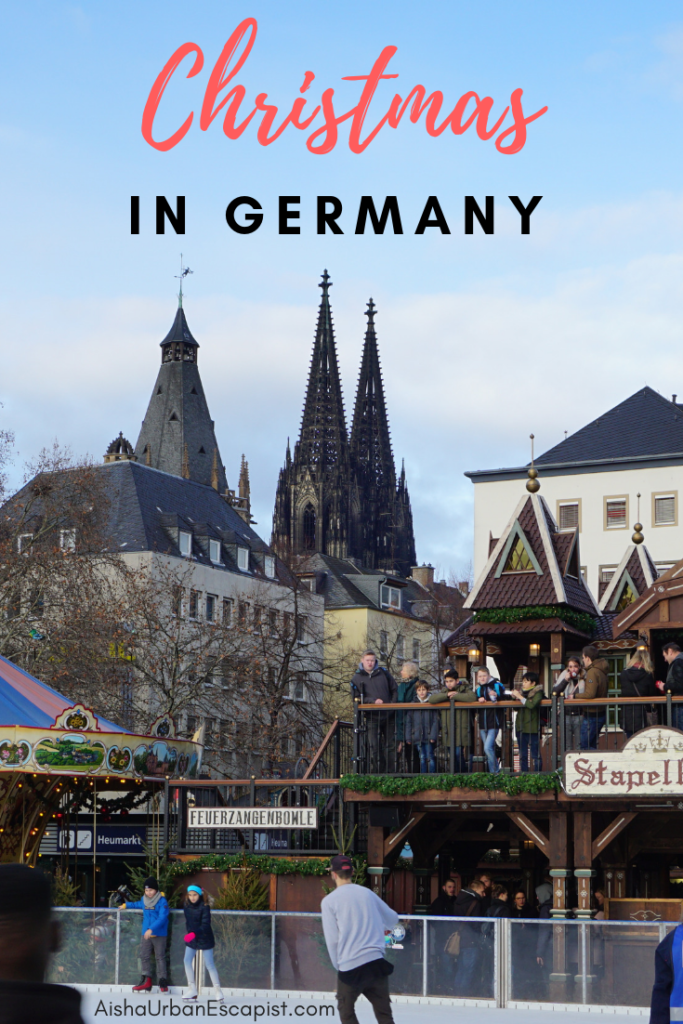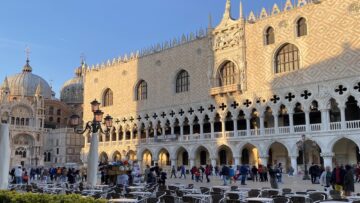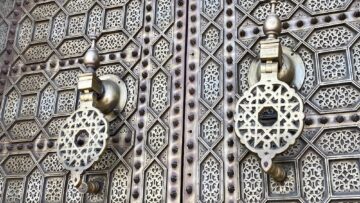It’s usually best to avoid holiday travel, when the airports are busy and prices are high, but Christmas in Germany is one of the few exceptions that make the inconvenience worth it. Germany is known for doing Christmas big—elaborate Christmas markets, lights, food, handmade decorations, and all in the German tradition. I visited Christmas markets in Düsseldorf, Cologne, and Wuppertal this year, so read on for a guide to each.
Düsseldorf
In Düsseldorf, I took a guided tour led by the city’s tourism office, located in the Altstadt (Old Town) and right in the heart of the market. The Düsseldorf Christmas Market includes seven different themed markets that stretch from Old Town and across the Königsallee, a main street lined with high-end fashion stores, to the Kö-Bogen building. The market also includes an ice skating rink on Königsallee and a music stage.
Despite the rain, the market was just as festive and enchanting as you would hope. Over the two-hour Christmas Tour, our guide, Anja, led us through the themed markets with additional stops at the Rhine riverfront and a special stop at Hinkel Bakery. Hinkel Bakery opened in 1891 in Düsseldorf and has been run by the Hinkel family for four generations. Despite the line of customers out the door, the owner greeted our tour group and gave us freshly baked lebkuchen; a soft, fluffy, chocolate-covered gingerbread Christmas cookie.
The tour ended in the Kö-Bogen-Markt, where everyone had their choice of red or white glühwein (mulled wine) or hot chocolate, included in the ticket price. The Kö-Bogen, or “King’s Bow,” was designed by Daniel Libeskind and completed in 2013. It’s an architecturally impressive addition to downtown Düsseldorf that connects the commercial center with the city’s central park.
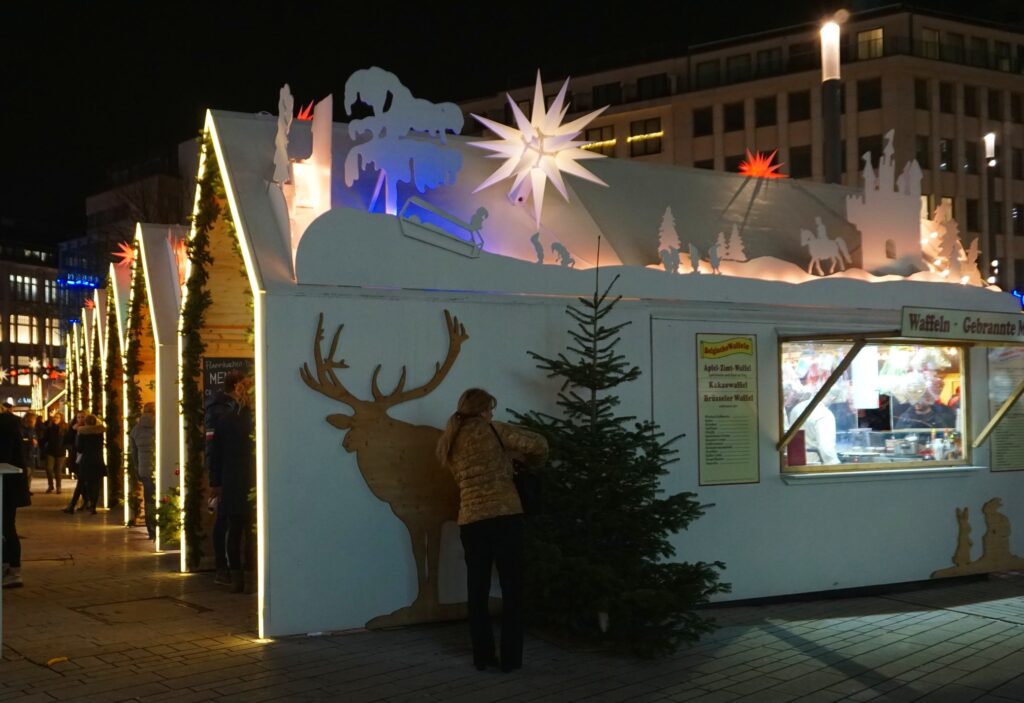
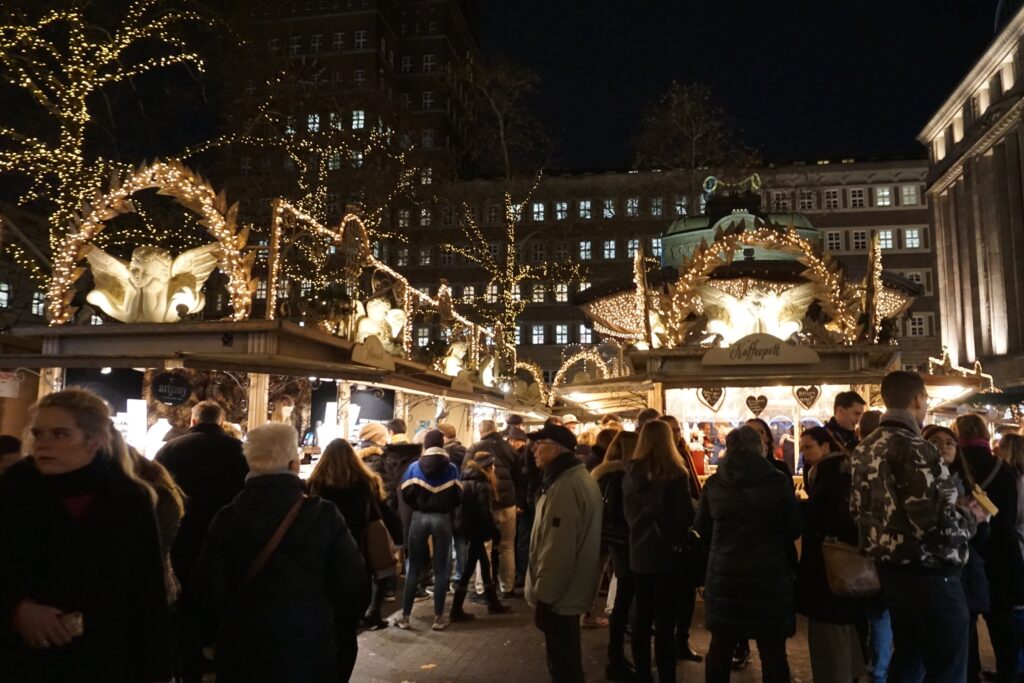

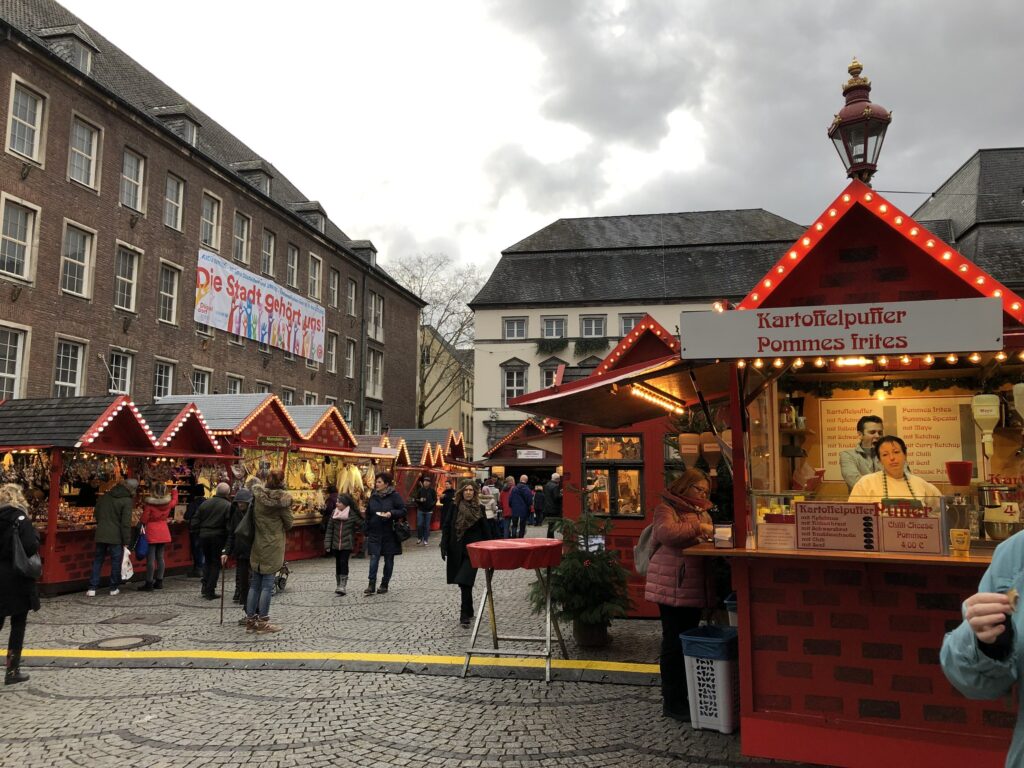

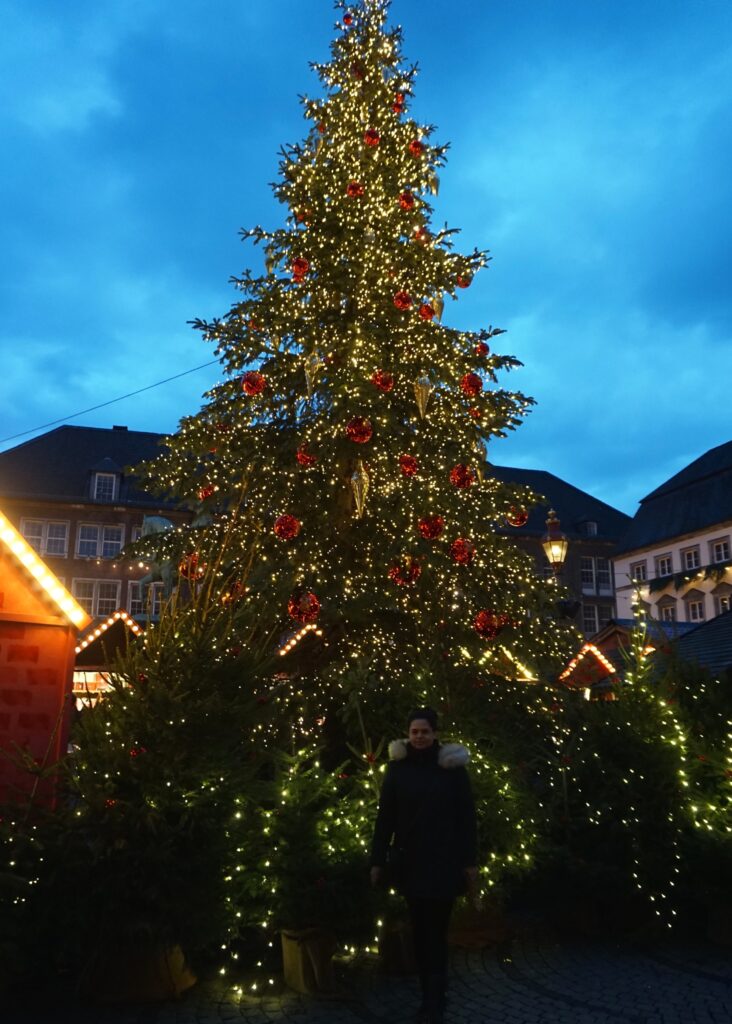
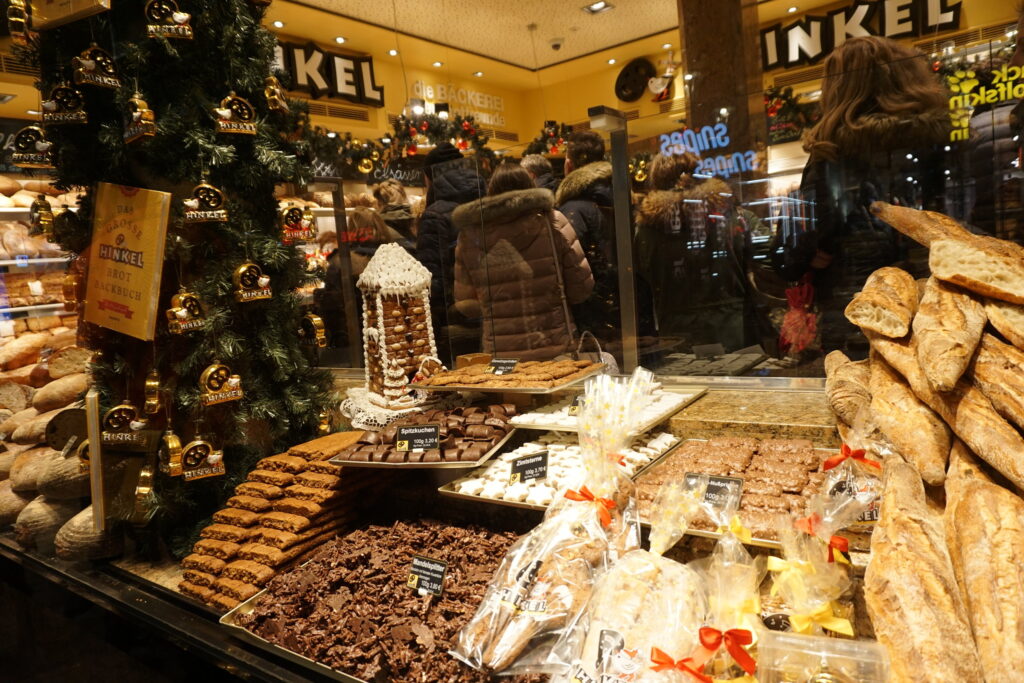

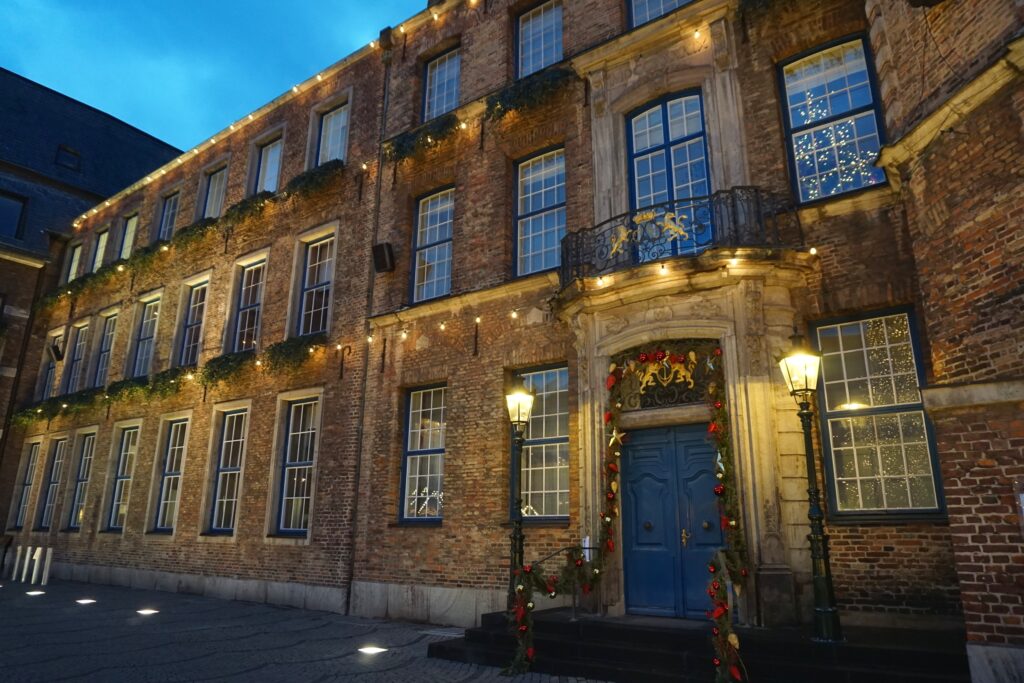



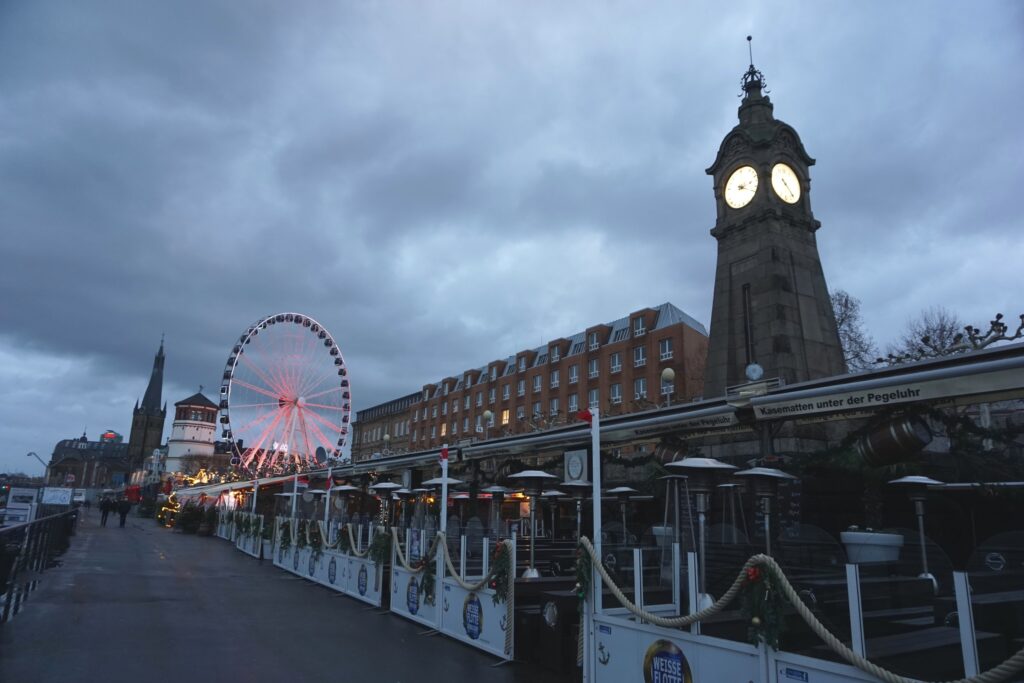
Cologne
The great part about Cologne’s Christmas markets is that the Cologne Cathedral towers above them, creating some beautiful views. The Weinachtsmarkt am Kölner Dom (Christmas market at the Cologne Cathedral) sits right outside the Gothic cathedral, which happens to be Germany’s most-visited landmark and an UNESCO World Heritage site. Its construction began in 1248, halted in 1473, and was completed in 1880 to its original Medieval plan. From the center of the market, you can look up at the cathedral through a tent of string lights that covers the vendor booths.

If you walk south from the cathedral, you’ll come across more themed Christmas markets. Just down a flight of stairs from the cathedral is a small market bathed in yellow lights and featuring a huge Christmas pyramid as a centerpiece.
My favorite themed market was a short walk beyond that—Heinzels Wintermärchen. Heinzelmännchen are house gnomes and Wintermärchen means “winter fairytales,” so the market looks exactly as it sounds. Elves, woodworking, an ice skating rink, and costumed vendors made this market into a true winter wonderland that made you forget you’re in the middle of a big city.
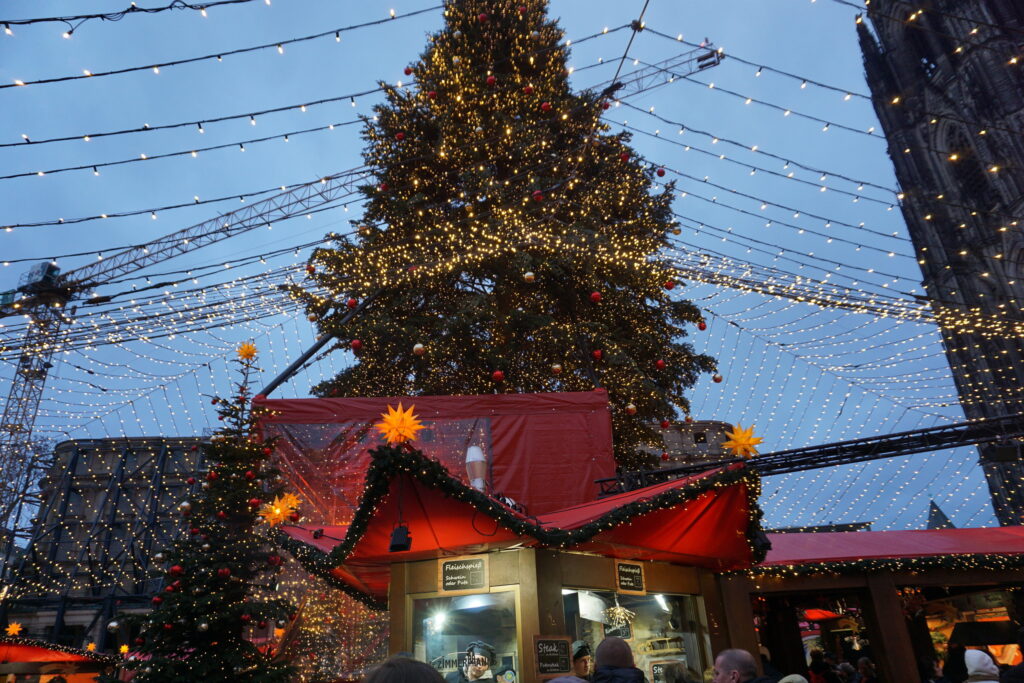
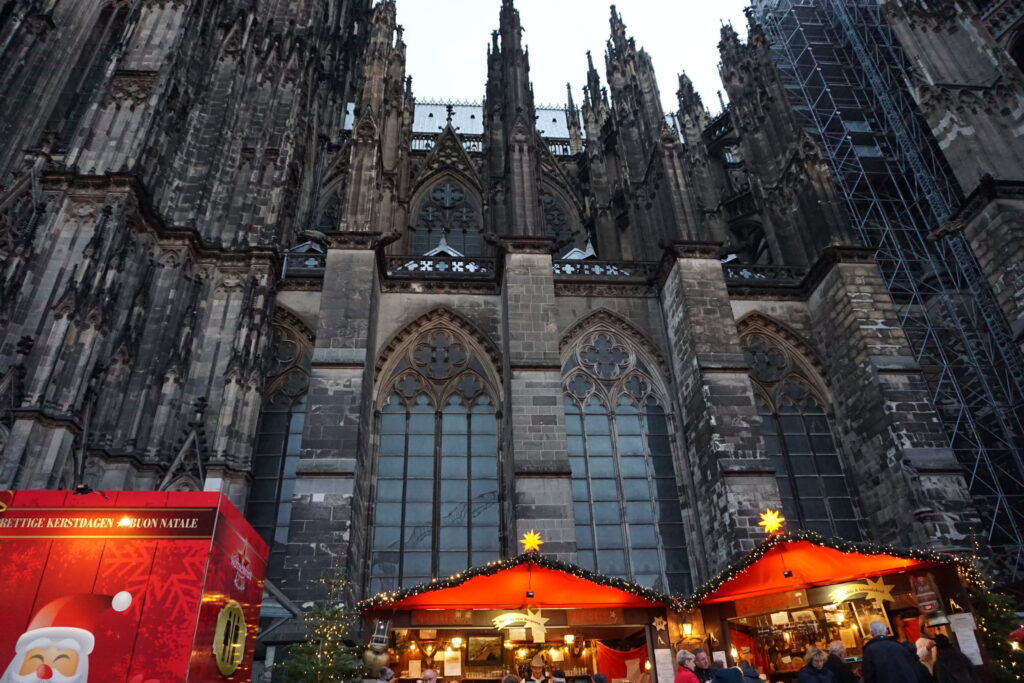
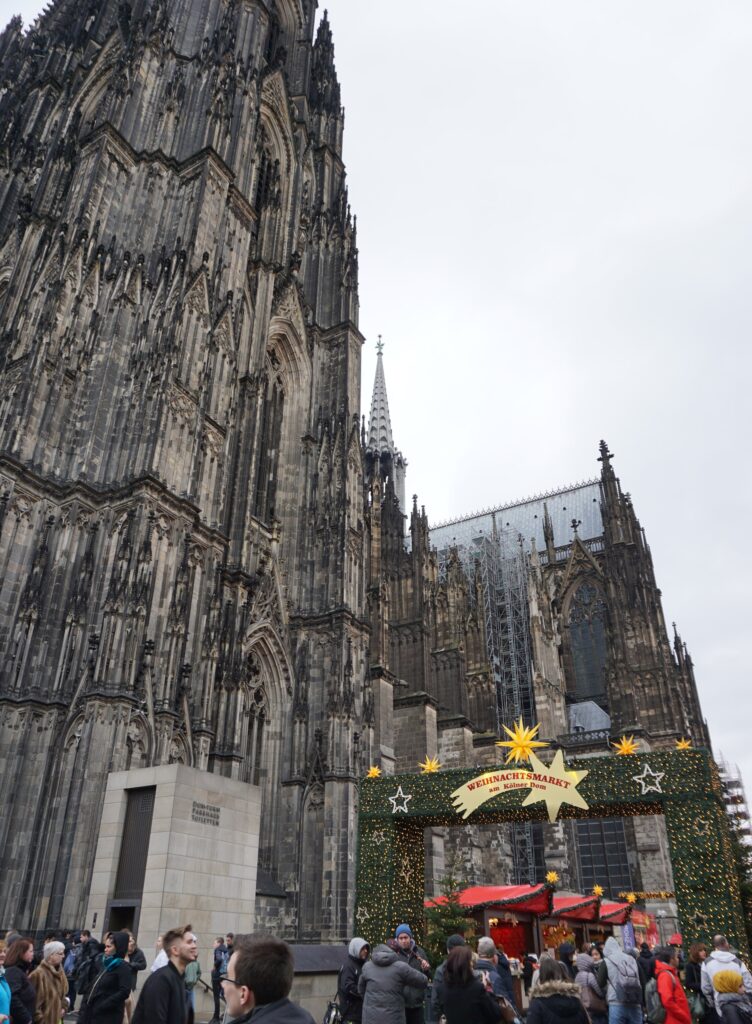
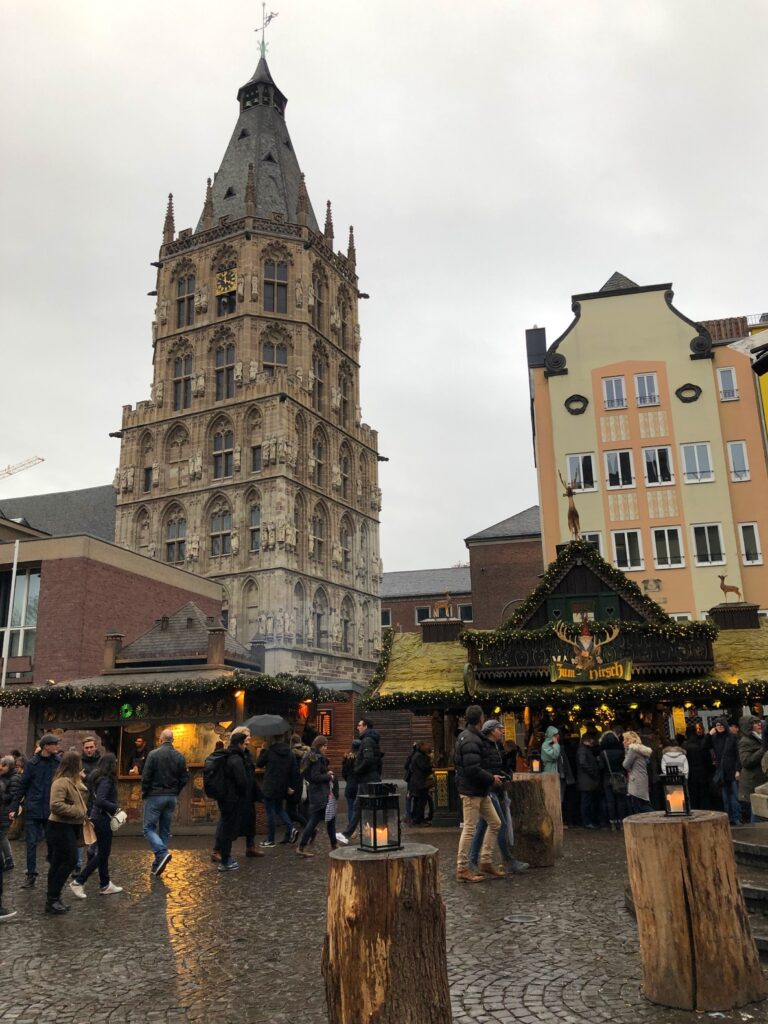

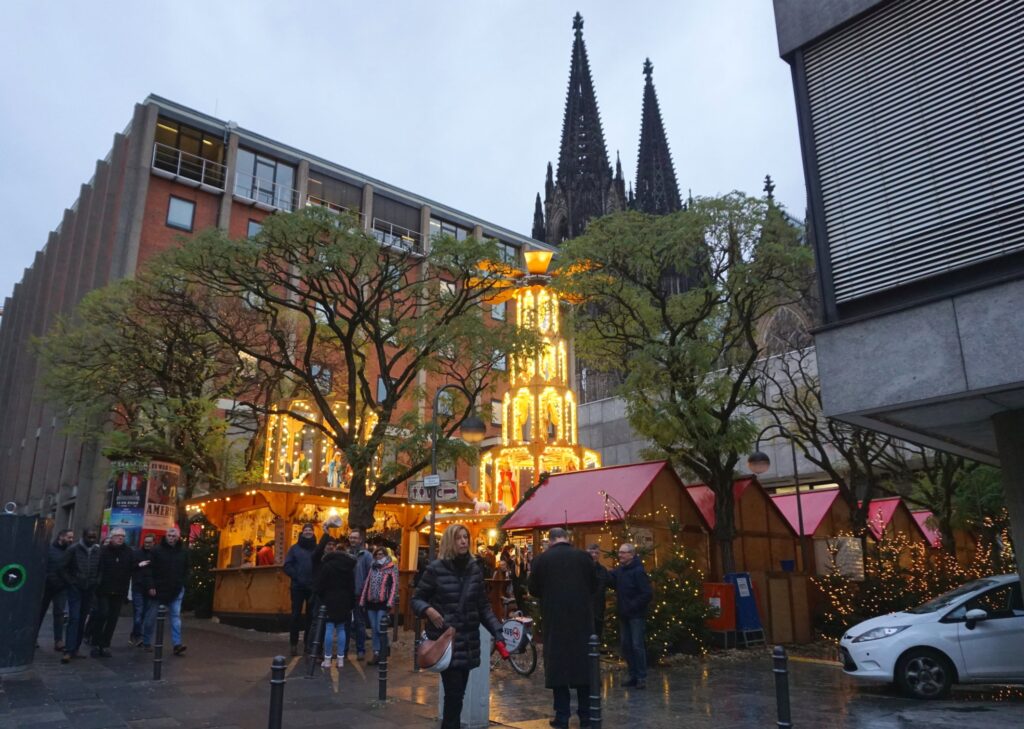

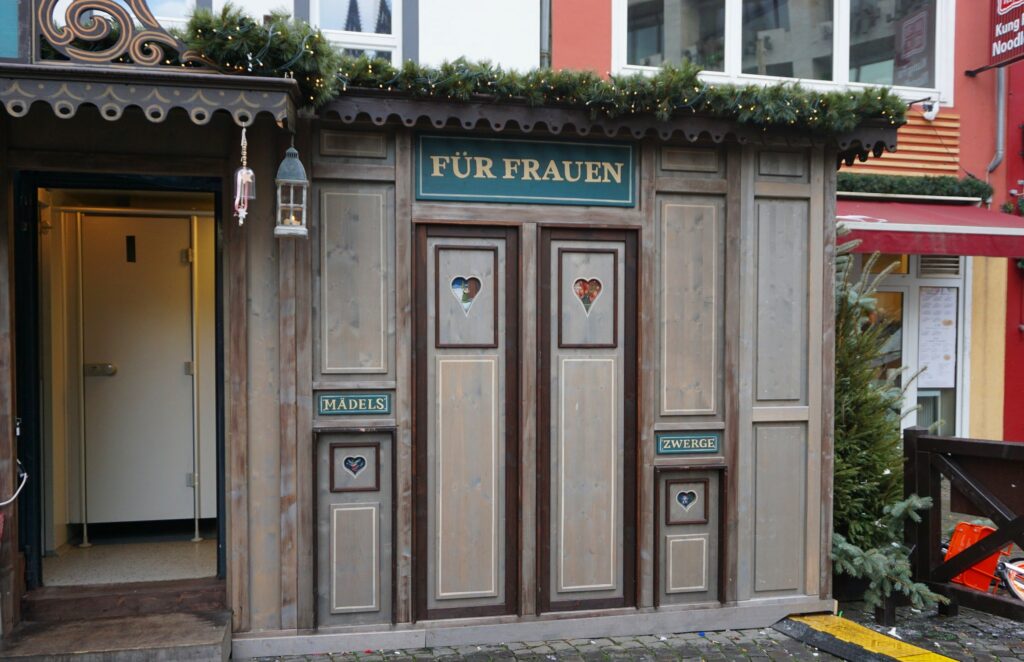
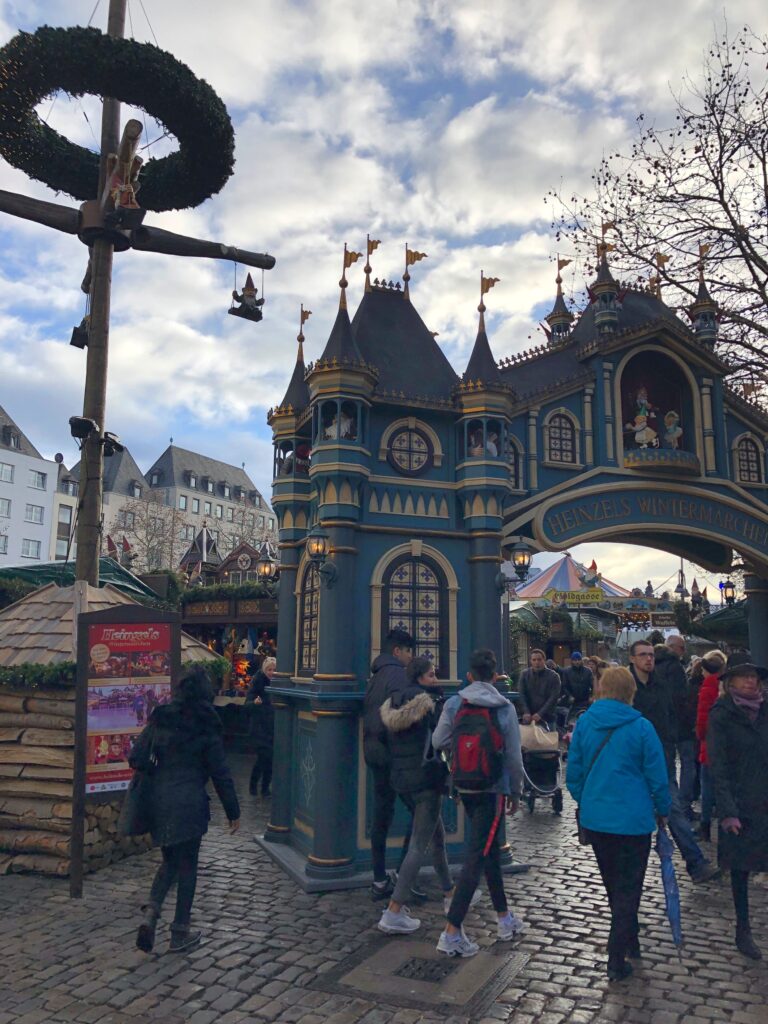

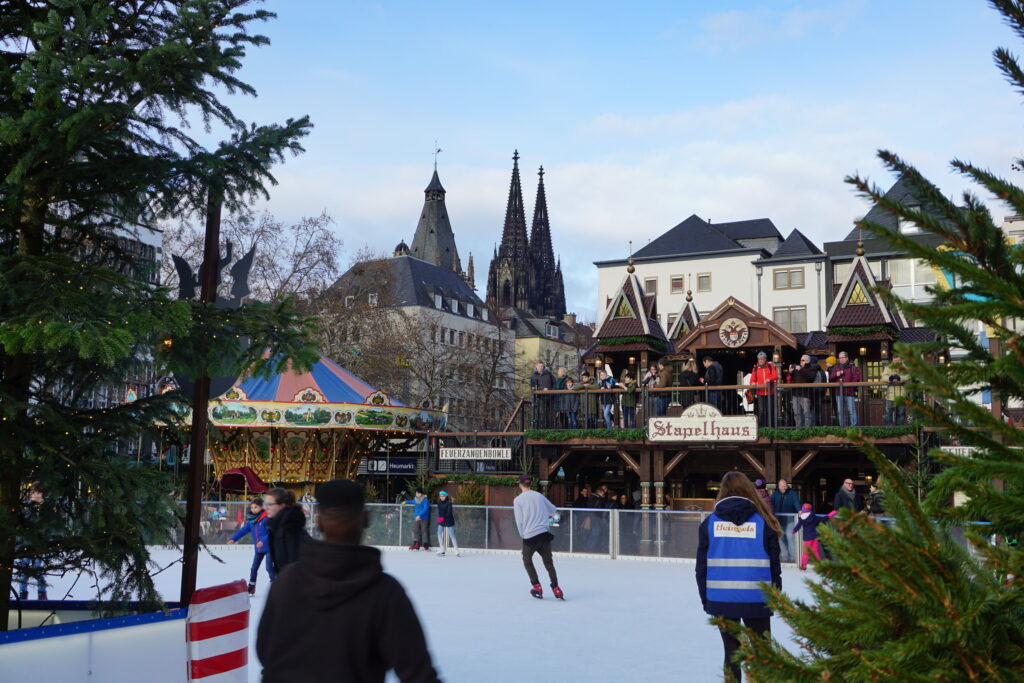
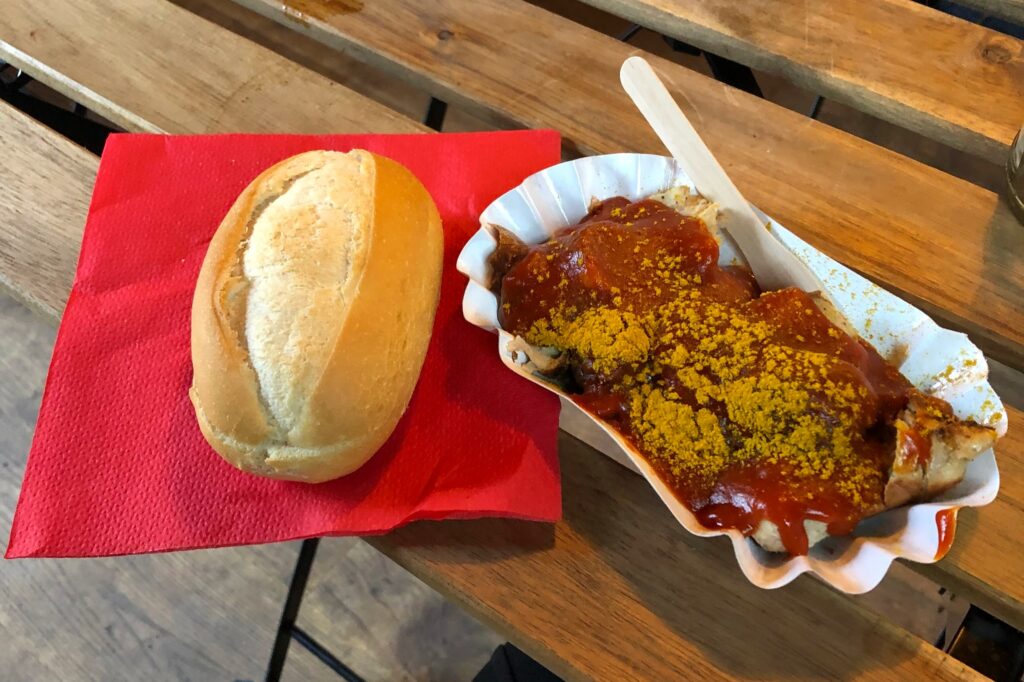
Wuppertal
Wuppertal is a city about 45 minutes away from Düsseldorf by car and where I stayed during my holiday trip. The city also has multiple Christmas markets, including the main market in its downtown commercial district. But the one I enjoyed most was just a couple blocks away from the main market, called the Mittelalterlicher Märchenmarkt. This medieval fairytale-themed market had bonfires, medieval flute music, dimly lit corners to eat and drink, and even a few medieval costumes for sale. Every Christmas market has vendors selling the typical German Christmas decorations and food, but I appreciated that many of the vendors’ products at this market closely matched the theme. I had Flammlachs, or flamed salmon, for the first time, which you can now find at most of the Christmas markets. As a salmon-lover, I highly recommend it.


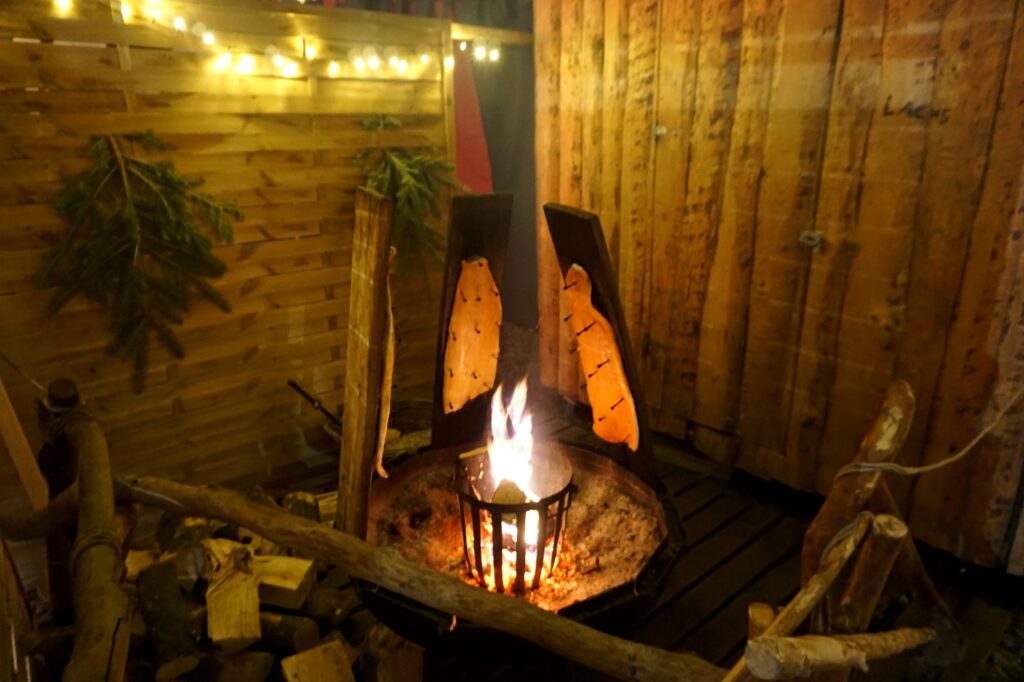
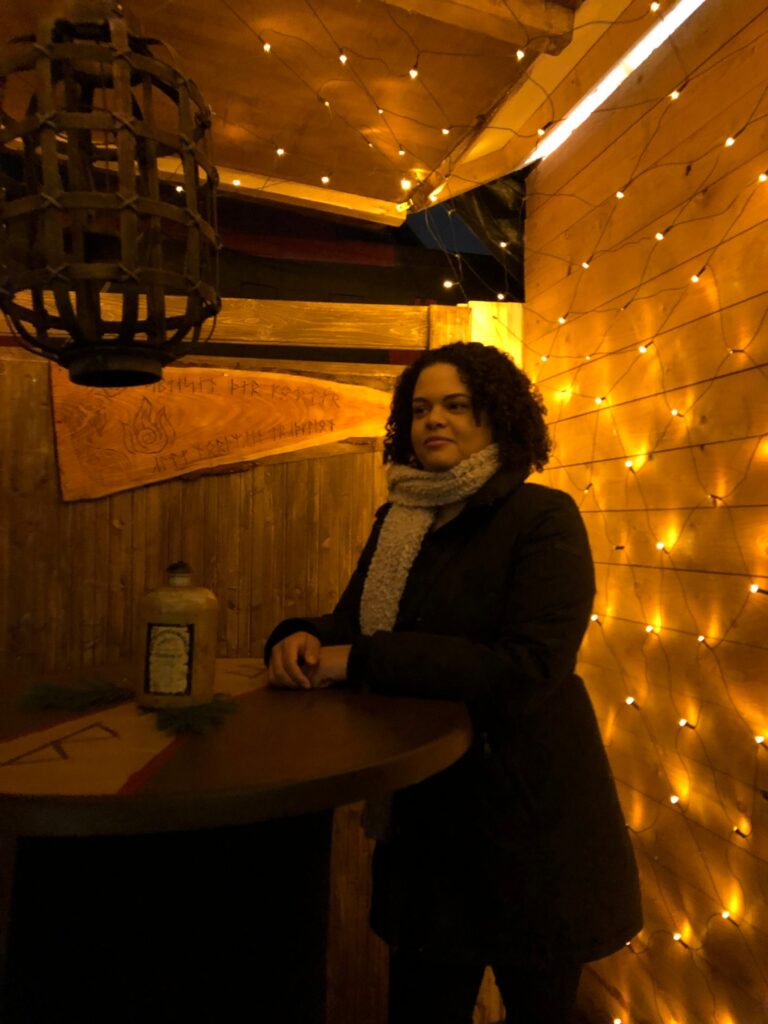
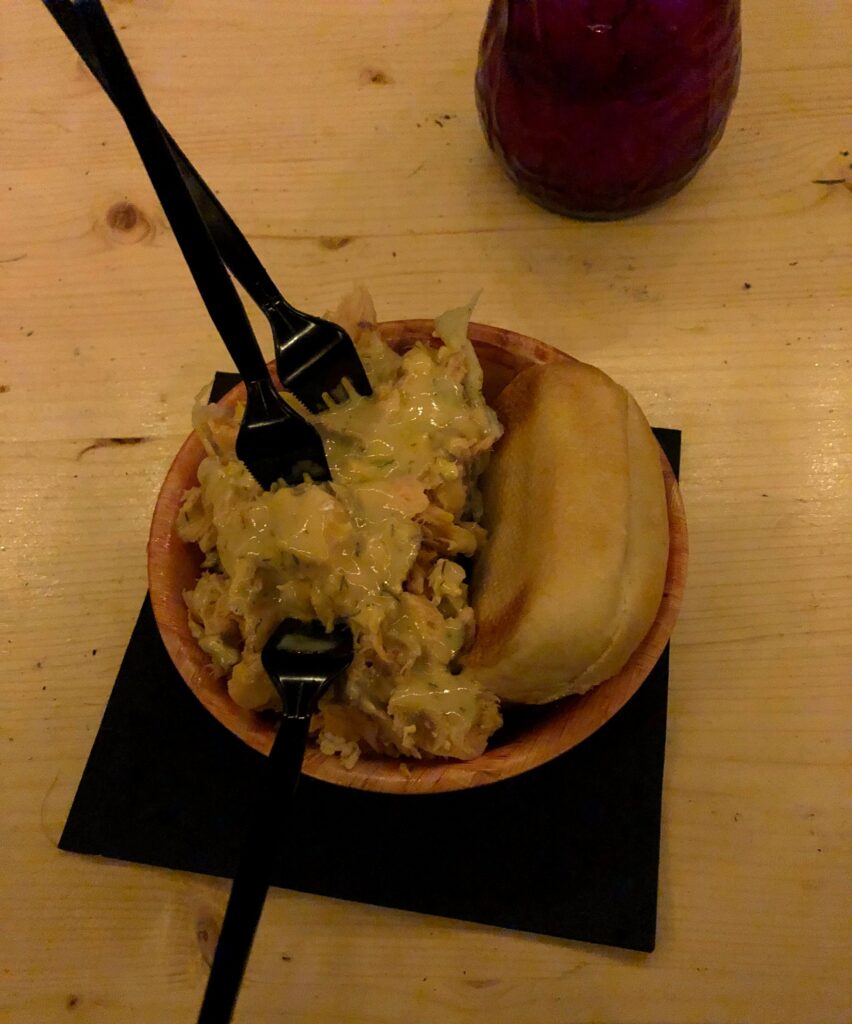
There are so many Christmas markets across Germany, with the Nuremberg market being the most popular. But if you can’t see them all, these three are close enough that you can visit them without much effort. Don’t forgot to collect your souvenir glühwein mugs at each!
If you liked this post, check these out:
15 Amazing Holiday Gift Ideas for Travel Lovers
How to See Munich’s Highlights: A Munich To-Do List
A Complete Guide to Christmas in Washington DC
A Complete Guide to Christmas in Baltimore
Pin It for Later:
